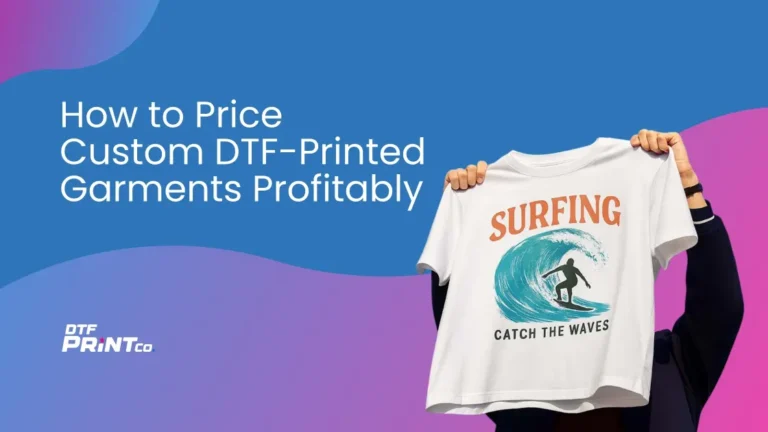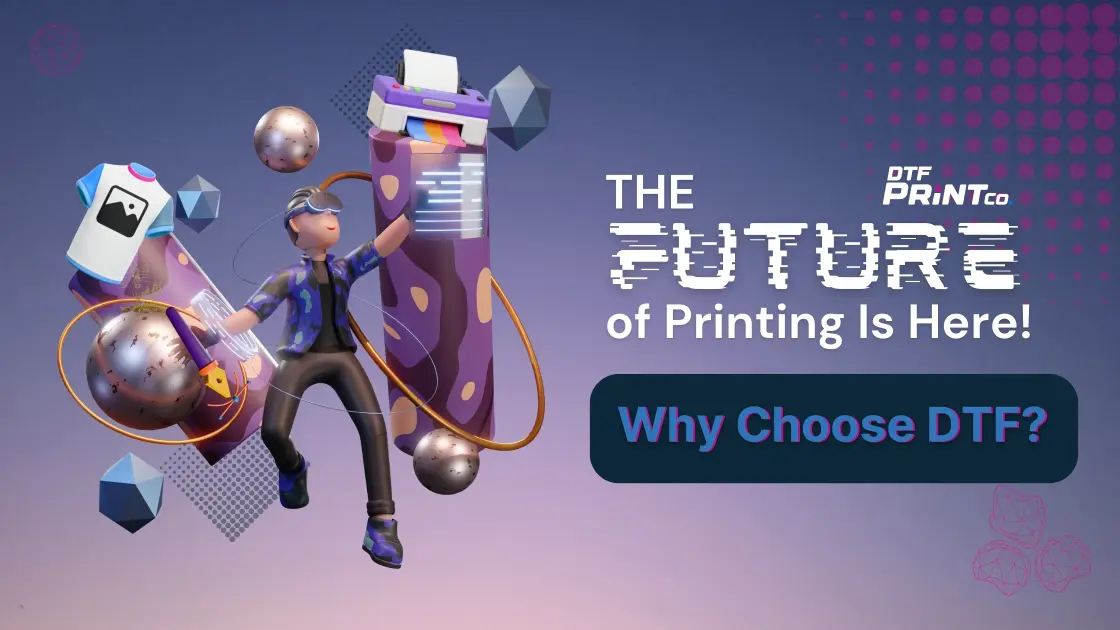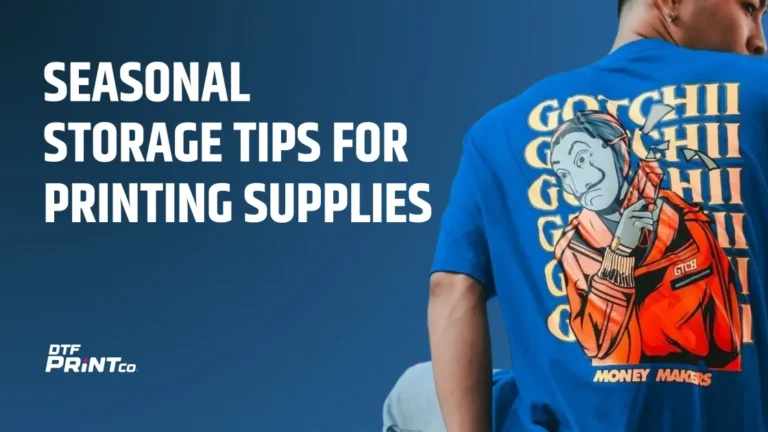Printing’s been around forever, right? From Gutenberg’s press to those clunky inkjets we all secretly hated, it’s evolved more than we give it credit for.
But let’s be real—most of us don’t think about printing tech until we’re cursing a jammed machine or marveling at a crisp design on a T-shirt. Enter Direct-to-Film (DTF) printing, the new kid on the block that’s turning heads and making waves.
If you’re wondering why DTF is suddenly the talk of the town—or at least the print shop—stick with me. This isn’t just another gimmick; it’s a game-changer. Here’s why DTF might be the future of printing and why you should care.
What Even Is DTF Printing?
DTF stands for Direct-to-Film, and no, it’s not some obscure movie genre. It’s a printing method where designs are printed onto a special film, coated with a powdery adhesive, and then heat-pressed onto fabric (or other surfaces). Think of it like a high-tech sticker that bonds with your material in a way that’s durable, vibrant, and—dare I say it—pretty darn cool.
Unlike traditional screen printing or even its cousin DTG (Direct-to-Garment), DTF doesn’t mess around with pre-treating fabrics or limiting you to cotton. It’s versatile, fast, and delivers eye-popping results. I first stumbled across DTF when a buddy of mine started a side hustle printing custom hoodies. He swore by it, and after seeing the quality firsthand, I was hooked too.
Why DTF Is Stealing the Spotlight
So, what’s the big deal? Why should you ditch your old methods and jump on the DTF train? Let’s unpack the reasons it’s got everyone buzzing.
1. Versatility That’ll Blow Your Mind
One of the coolest things about DTF is how it plays nice with almost any material. Cotton? Sure. Polyester? Yup. Blends, leather, even wood? You bet. I’ve seen DTF prints on everything from tote bags to sneakers, and the results are consistently sharp. Compare that to screen printing, where you’re juggling screens and praying the ink sticks, or DTG, which can be picky about fabric types. DTF doesn’t care—it just works.
2. Color and Detail That Pop
If you’re into bold, vivid designs (and who isn’t?), DTF delivers. The process uses a full-color CMYK printer paired with white ink, so you get rich gradients and crisp details without breaking a sweat. I once printed a galaxy-themed design with swirling purples and blues for a friend’s birthday gift, and the depth was unreal—like staring into actual space. It’s perfect for intricate logos, photos, or anything that needs to stand out.
3. No More Setup Nightmares
Screen printing veterans know the drill: hours spent prepping screens, mixing inks, and cleaning up. DTF skips all that. You design, print the film, apply the powder, and press. Done. For small runs or one-offs, it’s a lifesaver. I’ve watched shop owners go from stressed-out screen-preppers to chill DTF operators, and the vibe shift is real.
4. Durability You Can Trust
Nobody wants their dope design peeling off after one wash. DTF prints are tough—stretchy, washable, and built to last. The adhesive powder fuses the ink to the material like it’s part of the family. I’ve got a DTF-printed shirt I’ve worn and washed dozens of times, and it still looks fresh off the press.
5. Cost-Effective Vibes
Here’s where it gets practical. DTF doesn’t demand a huge upfront investment like screen printing setups, and it’s way more affordable for small batches than DTG can be. For startups, hobbyists, or anyone testing the waters, it’s a budget-friendly way to get pro-level results without selling your soul.
DTF vs. The Old Guard: A Quick Showdown
Still on the fence? Let’s stack DTF up against its rivals in a no-nonsense comparison.
| Method |
Setup Time |
Material Flexibility |
Color Quality |
Cost for Small Runs |
Durability |
| DTF |
Fast (minutes) |
High (most surfaces) |
Excellent |
Affordable |
Great |
| Screen Printing |
Slow (hours) |
Medium (fabric-specific) |
Good |
Pricey |
Great |
| DTG |
Medium (pre-treat) |
Low (cotton-heavy) |
Excellent |
Moderate |
Good |
DTF’s not perfect—it’s got a slight learning curve, and the film cost adds up for massive runs—but for most folks, it’s hitting all the right notes.
Who’s Loving DTF Right Now?
This isn’t just a niche thing for print geeks (though we’re all in). DTF’s popping off across industries.
- Small Businesses & Hustlers: Custom apparel startups are eating this up. Low overhead, high-quality output—it’s a dream combo.
- Artists & Designers: If you’ve got wild, colorful ideas, DTF lets you bring them to life without compromise.
- Etsy Sellers: One-off orders or limited drops? DTF’s speed and flexibility make it a go-to.
- Big Brands: Even the heavy hitters are testing DTF for prototyping or special runs.
I chatted with a local artist who switched to DTF for her merch line. She said it cut her production time in half and let her experiment with crazier designs. That’s the kind of win that keeps the hype alive.
The Future’s Looking Bright (and Printed)
So, where’s DTF taking us? Honestly, it feels like we’re just scratching the surface. Tech’s always moving, and DTF’s no exception. Printers are getting faster, films are getting cheaper, and the possibilities are expanding. Imagine DTF on 3D objects or integrated with smart fabrics—sci-fi stuff that’s not so far off.
I can’t help but think of my old high school art class, where we’d silkscreen posters and pray they didn’t smudge. If we’d had DTF back then, we’d have been unstoppable. Today’s creators have that power, and it’s only going to get better.
Getting Started with DTF: Tips from a Fan
Ready to dive in? Here’s some real-talk advice to kick things off:
- Gear Up Smart: You’ll need a DTF printer, heat press, and film. Don’t skimp on quality—cheap gear can tank your results. My buddy learned that the hard way with a budget printer that ghosted him mid-run.
- Master the Process: Watch tutorials, experiment with scraps, and nail the powder application. It’s not rocket science, but practice makes perfect.
- Design with Guts: DTF loves bold, so don’t hold back. Test gradients, tiny details—push it to the limit.
- Start Small: Print a few pieces, wear them, wash them, see how they hold up. Confidence comes from testing.
When I first tried DTF, I botched a couple films—too much powder, uneven heat. But once I got the rhythm, it was smooth sailing. Now I’m that guy gifting custom tees like it’s my job.
Why Choose DTF? Because It’s Awesome
Look, printing’s not just about slapping ink on stuff—it’s about creativity, freedom, and making something that lasts. DTF gets that. It’s not bogged down by old-school limits or sky-high costs. It’s accessible, powerful, and honestly kind of fun. Whether you’re a business owner scaling up, an artist flexing your skills, or just someone who wants a killer custom hat, DTF’s got your back.
The future of printing isn’t some distant dream—it’s here and called DTF. So why choose it? Because it’s versatile enough to handle your wildest ideas, durable enough to stick around, and chill enough to fit your vibe. Give it a shot. You might just find yourself as obsessed as I am.
FAQ
- What’s the Difference Between DTF and DTG Printing?
DTF (Direct-to-Film) prints designs onto a film that’s then pressed onto fabric, while DTG (Direct-to-Garment) sprays ink directly onto the material. DTF wins on versatility—think polyester, blends, even non-fabrics—while DTG’s best for cotton. DTF’s also less fussy about pre-treatments, which is a huge time-saver.
- Is DTF Printing Expensive to Start?
Not really! You’ll need a DTF printer, heat press, and supplies like film and powder, but it’s cheaper than setting up a full screen printing rig. For small batches, it’s a steal compared to DTG too. I started with a mid-range setup for under a grand, and it paid off fast.
- How Long Do DTF Prints Last?
They’re tough as nails! With proper care—wash inside out, skip the harsh cycles—DTF prints can handle dozens of washes without fading or peeling. My go-to hoodie’s been through the wringer and still looks crisp.
- Can I Use DTF for One-Off Designs?
Heck yes! That’s one of its superpowers. No screens, no minimums—just print your film and press. It’s perfect for custom gifts or testing a new idea without committing to a big run.
- Do I Need Fancy Skills to Use DTF?
Nah, it’s pretty straightforward. If you can handle basic design software and follow a few steps (print, powder, press), you’re golden. It took me a weekend of messing around to get comfy—totally doable.



